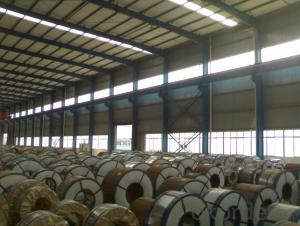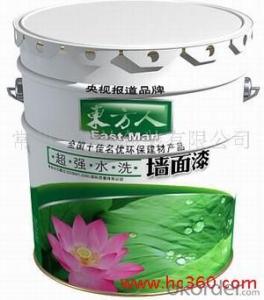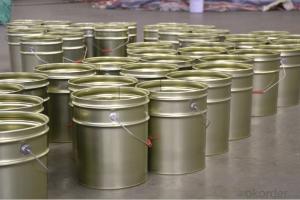Electrolytic Tinplate Coil and Sheets for Food Packing
- Loading Port:
- Tianjin
- Payment Terms:
- TT OR LC
- Min Order Qty:
- 25 m.t
- Supply Capability:
- 7000 m.t/month
OKorder Service Pledge
OKorder Financial Service
You Might Also Like
1.Structure of Electrolytic Tinplate Coil and Sheets for Food Packing Description
Electrolytic Tin Plate Coils and Sheets for Foods Metal Packaging, is one thin steel sheet with a coating of tin applied by electrolytic deposition. Tinplate made by this process is essentially a sandwich in which the central core is strip steel. This core is cleaned in a pickling solution and then fed through tanks containing electrolyte, where tin is deposited on both sides. As the strip passes between high-frequency electric induction coils, it is heated so that the tin coating melts and flows to form a lustrous coat.
2.Main Features of Electrolytic Tinplate Coil and Sheets for Food Packing
Appearance – Electrolytic Tin Plate is characterized by its beautiful metallic luster. Products with various kinds of surface roughness are produced by selecting the surface finish of the substrate steel sheet.
Paintability and printability – Electrolytic Tin Plates have excellent paintability and printability. Printing is beautifully finished using various lacquers and inks.
Formability and strength – Electrolytic Tin Plates have got very good formability and strength. By selecting a proper temper grade, appropriate formability is obtained for different applications as well as the required strength after forming.
Corrosion resistance – Tinplate has got good corrosion resistance. By selecting a proper coating weight, appropriate corrosion resistance is obtained against container contents. Coated items should meet 24 hour 5 % salt spray requirement.
Solderability and weldability – Electrolytic Tin Plates can be joined both by soldering or welding. These properties of tinplate are used for making various types of cans.
Hygienic – Tin coating provides good and non toxic barrier properties to protect food products from impurities, bacteria, moisture, light and odours.
Safe – Tinplate being low weight and high strength makes food cans easy to ship and transport.
Eco friendly – Tinplate offers 100 % recyclability.
Tin is not good for low temperature applications since it changes structure and loses adhesion when exposed to temperatures below – 40 deg C.
3.Electrolytic Tinplate Coil and Sheets for Food Packing Images
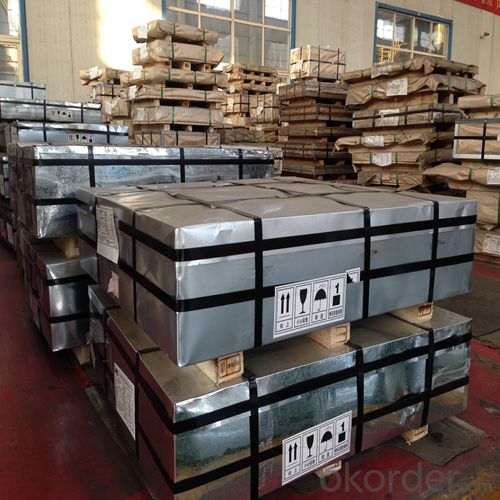
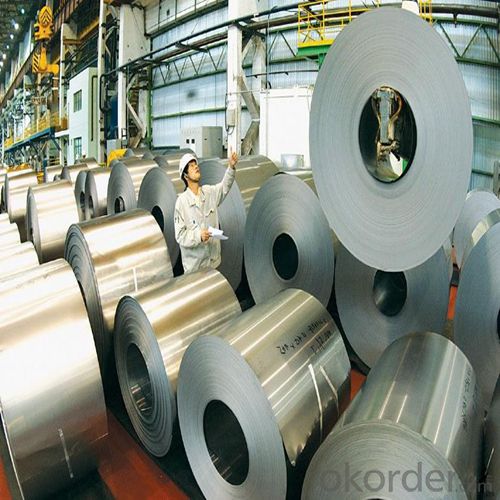
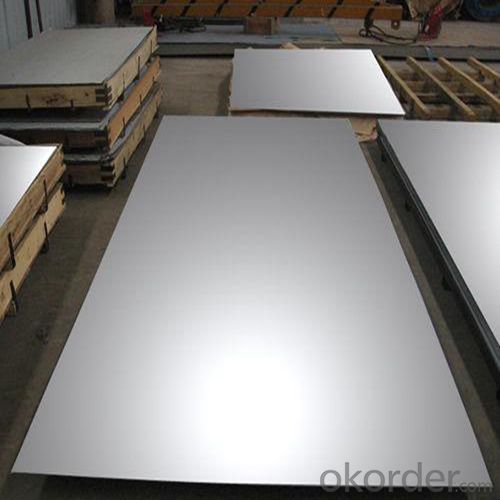
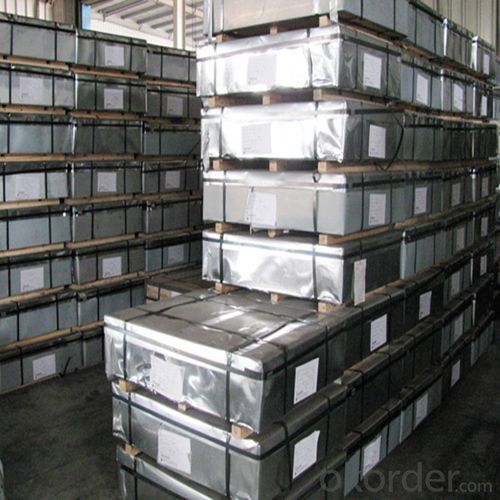
4.Electrolytic Tinplate Coil and Sheets for Food Packing Specification
Standard | ISO 11949 -1995, GB/T2520-2000,JIS G3303,ASTM A623, BS EN 10202
|
Material | MR,SPCC |
Thickness | 0.15mm - 0.50mm |
Width | 600mm -1150mm |
Temper | T1-T5 |
Annealing | BA & CA |
Coil Inner Diameter | 508mm |
Weight | 6-10 tons/coil 1~1.7 tons/sheets bundle |
Passivation | 311 |
Oil | DOS |
Surface | Finish,bright,stone,matte,silver |
5.FAQ of Electrolytic Tinplate Coil and Sheets for Food Packingg
- How are the Electrolytic Tin Plates specified?
The Electrolytic Tin Plates are specified as per the steel base, extent of tempering, the coating weight, annealing method and the surface finish.
- How many types there are for base steels?
The base steels are of three types: Type MR, L, D
- Q:How thick is tinplate?
- Tinplate typically has a thickness ranging from 0.13 mm to 0.49 mm.
- Q:What are the different types of tinplate finishes available?
- There are several different types of tinplate finishes available, including bright finish, stone finish, matte finish, and lacquered finish. Each finish has its own unique appearance and characteristics, allowing for a variety of options when it comes to tinplate products.
- Q:Can tinplate be used for packaging beverages?
- Yes, tinplate can be used for packaging beverages. Tinplate is a durable and corrosion-resistant material that can effectively protect the contents of beverage packaging from external factors such as light, moisture, and oxygen. It is commonly used for packaging canned beverages like soda, beer, and juices.
- Q:How does tinplate compare to other packaging materials in terms of cost?
- Tinplate is generally considered a cost-effective packaging material compared to other alternatives. While it may have a higher upfront cost compared to materials like plastic or cardboard, it offers excellent durability and longevity, which can make it more cost-efficient in the long run. Additionally, tinplate can be easily recycled, reducing disposal costs and environmental impact. Overall, tinplate's durability, recyclability, and potential for long-term cost savings make it a favorable choice for many industries.
- Q:What are the main applications of tinplate in the beverage industry?
- Tinplate is mainly used in the beverage industry for the production of cans and packaging materials. It provides a protective barrier against corrosion, ensuring the product's integrity and extending its shelf life. Tinplate cans are lightweight, easily stackable, and offer convenient storage and transportation. Additionally, tinplate's ability to be printed and decorated makes it ideal for branding and marketing purposes in the beverage industry.
- Q:Is tinplate resistant to corrosion?
- Yes, tinplate is resistant to corrosion.
- Q:Can tinplate be used for coinage?
- No, tinplate cannot be used for coinage as it is a thin sheet of steel coated with a layer of tin, which is not a suitable material for making coins.
- Q:What are the typical manufacturing processes for tinplate products?
- The typical manufacturing processes for tinplate products include coil cutting, cleaning and coating, pressing or stamping, forming or shaping, welding or soldering, and final finishing or packaging.
- Q:How does tinplate packaging contribute to product shelf life?
- Tinplate packaging contributes to product shelf life by providing a durable and protective barrier against external factors such as moisture, oxygen, light, and temperature fluctuations. This helps to prevent spoilage, retain product freshness, and extend the overall shelf life of the packaged goods. Additionally, tinplate packaging is resistant to corrosion, ensuring the integrity of the packaging throughout the product's shelf life.
- Q:How is tinplate affected by extreme temperatures?
- Tinplate is minimally affected by extreme temperatures, thanks to its excellent heat resistance properties. It can withstand high temperatures without warping, melting, or losing its shape, making it a reliable material for a wide range of applications.
1. Manufacturer Overview |
|
|---|---|
| Location | |
| Year Established | |
| Annual Output Value | |
| Main Markets | |
| Company Certifications | |
2. Manufacturer Certificates |
|
|---|---|
| a) Certification Name | |
| Range | |
| Reference | |
| Validity Period | |
3. Manufacturer Capability |
|
|---|---|
| a)Trade Capacity | |
| Nearest Port | |
| Export Percentage | |
| No.of Employees in Trade Department | |
| Language Spoken: | |
| b)Factory Information | |
| Factory Size: | |
| No. of Production Lines | |
| Contract Manufacturing | |
| Product Price Range | |
Send your message to us
Electrolytic Tinplate Coil and Sheets for Food Packing
- Loading Port:
- Tianjin
- Payment Terms:
- TT OR LC
- Min Order Qty:
- 25 m.t
- Supply Capability:
- 7000 m.t/month
OKorder Service Pledge
OKorder Financial Service
Similar products
New products
Hot products
Hot Searches
Related keywords



